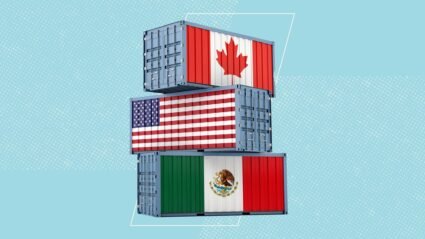Maintaining a positive brand image is key for your overall success and has become increasingly important in today’s digital world. One public misstep can go viral and undo years of your branding strategy and meticulous reputation management.
Global enterprise companies in particular face an uphill battle as they seek to maintain a cohesive international reputation. Your organization has to juggle cultural nuances in local markets to ensure that brand messaging and published content properly aligns with regional norms, conventions, and colloquialisms. Companies that overlook the importance of tailoring their content to fit with the local market risk being embarrassed, or worse, offending their target audience.
Notable Global Marketing Fails
While these mistakes are much more easily shared, brands have struggled with this issue for years.
Pepsi was the victim of a self-inflicted faux pas many years ago when it attempted to launch its “Pepsi Brings You Back to Life” campaign in China. This catchy, playful slogan in English literally translated to “Pepsi Brings Your Ancestors Back from the Grave” in Mandarin.
Clearly, there was a significant disconnect between the intended messaging of this brand campaign and the actual results. As you would expect, there was a great deal of confusion amongst Chinese consumers after seeing these ads which simply did not translate in a logical way.
Pepsi became the poster child for global marketing failures for a short while, but their embarrassment served as a valuable lesson learned: using literal, word-for-word content translations from one market to another is not a viable strategy for effective global marketing.
Translation oversights are not the only way that companies can get themselves into trouble with content when expanding into new global markets. Just ask Proctor and Gamble (P&G).
As part of an effort to break into the Japanese diaper market, P&G began running Pampers ads that featured a stork delivering diapers to new parents. The stork imagery that registered extremely well with American audiences fell completely flat in Japan. As it turns out, the story of the stork delivering babies to parents is a tale that is exclusive to Western culture. In Japanese literature, peaches are responsible for delivering babies to parents. By not properly researching the cultural norms of a new market, P&G took a significant hit in their diaper sales in that market.
As illustrated by the two examples above, even the most successful global enterprise companies are not immune to making mistakes with their international content marketing initiatives. Unlike Pepsi and P&G, many companies do not have the resources or clout to recover from mistakes as easily in global markets. So how do you avoid these common pitfalls?
The answer is transcreation.
What Is Transcreation?
For the purposes of content marketing, transcreation refers to the process of culturally adapting an existing piece of content that was originally created in one market to be relevant in a new, often very different, locale. The goal of transcreation is to optimize the original piece of content in such a way that it delivers the same message, evokes similar feelings, and maintains an accurate portrayal of the corporate brand in a different culture.
What Is The Difference Between Translation And Transcreation?
People often confuse translation and transcreation or wrongfully use the terms interchangeably.
Content translation focuses solely on producing an exact word-for-word match between two languages, whereas transcreation will alter copy to incorporate local slang and terminology to be more meaningful for the reader. Translations make no attempt at ‘localizing’ the original piece of content, which can result in confusion or render the content completely ineffective, as seen with the examples presented above.
It is important to work with native, in-country speakers that are familiar with the target market to ensure the best transcreation results.
What Does Transcreation Entail?
The process of transcreation extends beyond localizing content copy. To be most effective, transcreated content must also account for digital marketing best practices as well, specifically:
- Reviewing Link Localization: Effective digital content should always include a variety of links. Internal links that send users to business-specific landing pages can move readers down the conversion funnel whereas external links can build equity for the site and provide an additional layer of authority and trust to the content. An important part of transcreation is to ensure that the links being used are relevant to the new local audience. This means updating internal links to direct users to the local version of the corporate website and replacing external links that point to sources from the original locale with links that utilize sources in the new target market.
- Identifying Relevant Imagery: Images and visuals are an important part of creating successful content. For global corporate enterprises, they illustrate complex product information or serve as a way to communicate the desired brand image. As we saw with the P&G example, imagery and visuals do not always translate the same way from one culture to another. Every image should be reviewed to ensure that it will fit with the new target market that it is being used in.
- Using the Right Keywords: Content is often created for the purpose of ranking well in the search engines for particular keywords or terms. Global enterprise companies are constantly competing to be the most visible for important industry terms across all of their markets. However, the search terms may vary slightly from market to market, which means that special attention needs to be paid to keywords when performing transcreation. If the keyword for a transcreated piece does not match the search term being used by readers, it will likely not be found or rank well in the desired global market.
How To Get Started With Transcreation
Now that you understand that value and importance of transcreation, the next logical question is, “How do we get started?” There are several steps to follow that will set the stage for a successful transcreation project.
- Identify and recruit an in-country native speaker to perform the transcreation. They will know the local norms and search behaviors better than anyone else could.
- Make sure that the transcreator thoroughly understands the message, sentiment, and goal of the original piece of content so that they can deliver the same elements. Be clear here and do not make any assumptions about what the content creator knows about your intentions with the project. It can be difficult to identify your own assumptions, so evaluate this carefully.
- Perform localized keyword research before transcreating the original content so that the new copy flows naturally and feels authentic.
- Ensure quality by having a separate native speaker review the content, if possible.
Need help getting your transcreation efforts off the ground? Let us know how we can assist!







Responses